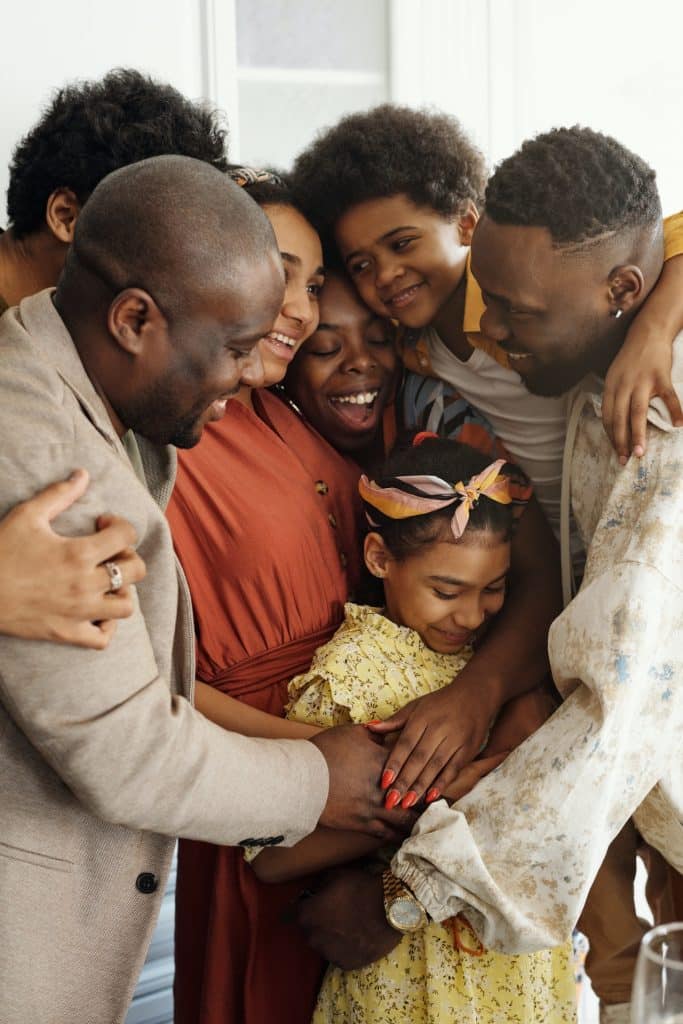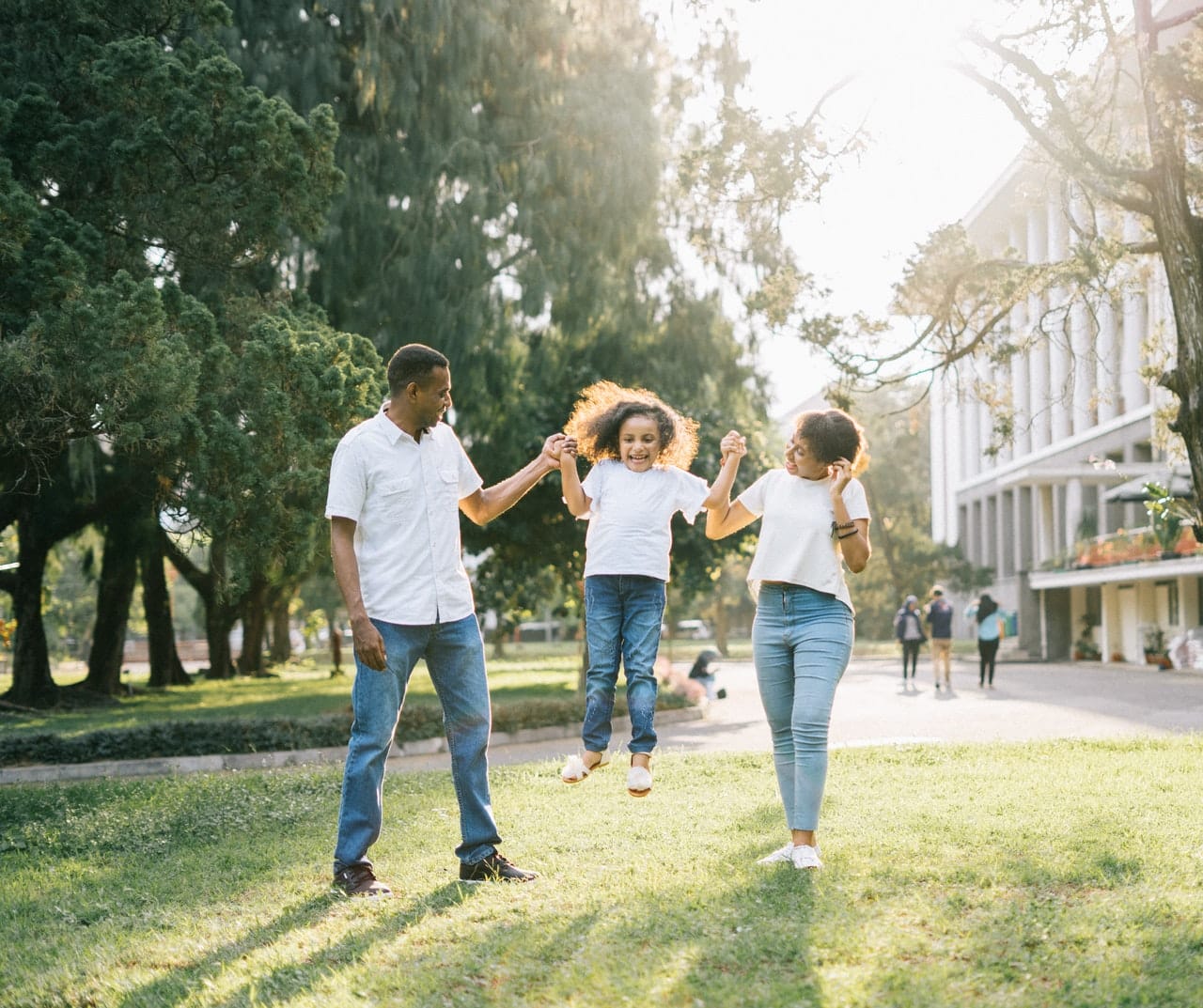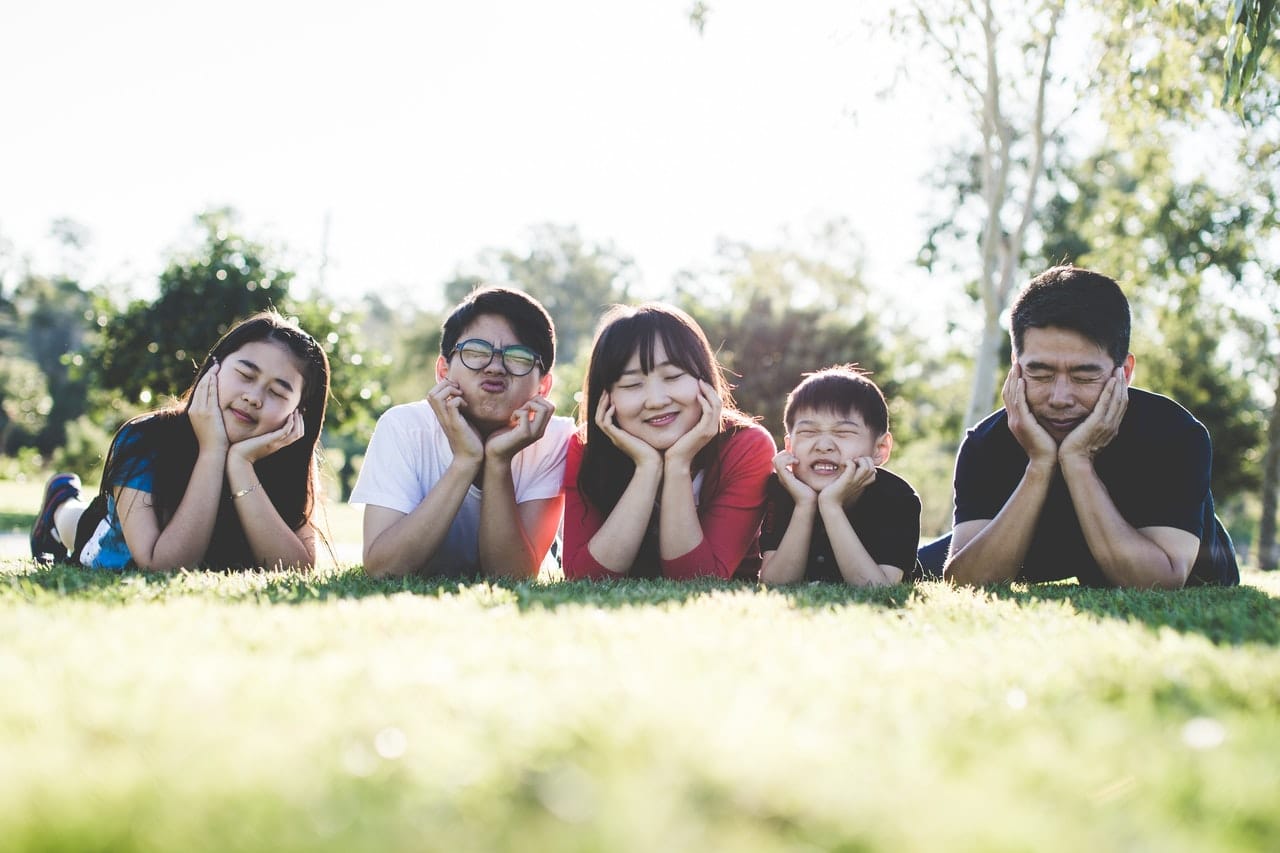The Only Family Photography Guide You Need
What Is Family Photography?
Family photography is a type of photography that captures people and individuals in a family, which can include parents, their children, grandchildren, aunts, uncles, and cousins.

Family photography is a staple in the photography business and both an art and a skill that needs to be mastered by any photographer to set themselves up for future success. Family sessions are always in demand because at any stage of life, capturing family moments is meaningful and those photos are something that families will want to hold onto.
From newborns to children at all stages of their lives, to grandparents and pets, there are always a lot of moving pieces in capturing a perfect family portrait, but these photo sessions can also be very rewarding and fun. And, family portraits are always great to add to your online portfolio repertoire.
If family photography is an area that you are new to, or looking to get more involved in – our advice is to jump right in. The thing about family pictures is that usually, it’s not something that is a one-hit-wonder.
Family photos are something that families will want to continue to document and by capturing beautiful images in your initial shoot, the chances of the family returning to you year after year or for special occasions will increase immensely. This will also help grow your relationship with the family and having comfortable clients will really help with the finished product of your photoshoot! And let’s face it, your job as a photographer is to make any family feel comfortable. So, on three say, “Family photography!”
What Is Family Photography?
There are many events that include family portrait photography – sometimes it’s a wedding or a reunion or graduation. Anytime you are photographing a family it falls under the family photography umbrella. These family photo sessions can range from small groups including parents and a newborn, to larger groups with extended family, etc.
A family session is not as simple as picking up a camera and asking everyone to say cheese. It can involve managing a large group of people, adhering to different dynamics or accessibility needs that can make getting group shots a little more challenging. It can also be with people who are not as experienced in front of the camera, which adds another somewhat challenging element to your job as a photographer.
You’ll have to find ways to capture beautiful family shots with people who are uncomfortable in front of your lens. While it can become a bit of a juggling act and involve many intricacies, there is also a lot of joy that can come with family photography. The stories you create through your photographs will often live on within the family for many years – on top of family mantels, inside wallets, and hanging on a wall in the hallway.
The family photos you take will bring a lot of meaning to your client’s lives, so read up on how you can master your trade and we hope you can take away a few tips from what’s to come.

Ready to build a family photography website?
Showcase the best moments you’ve captured and create your online portfolio website.
How To Take Good Family Photos
How do you make sure the photos you take at your photo session will live up to the expectations of your clients? What kind of camera settings and equipment is the most optimal? How will they look on your portfolio website? How can you choose the perfect venue or location for your photoshoot? How can you best set yourself up for success? All the answers to your questions and everything else you need to know about taking good family photos is right here:
Best Camera Setting for Photos
Make sure you have the right camera settings for the photos you want to take for your clients. When choosing camera settings, there are several factors to consider. Consider who you’re photographing, the shot’s size, lighting, and setup. You’ll want to use manual mode most of the time to have the most control over your shots and photos. Also, make sure your camera settings are up to date.
As a rule of thumb, the first thing to remember is that low ISO is always the best because this is what determines a higher quality in the photos you take. All you need to think about is that high quality is everything. As a starting place, a good baseline to use is ISO 400 – or start somewhere between ISO 100 and ISO 400.
When you choose to put a high ISO on your camera setting you will add excess noise to your photos, which means that these images and the subjects within them will have more of a grainy look to them. You should, however, put your camera on high ISO if you are in an area with low light.
Getting the right camera settings also includes shooting in Raw format. This will give you more control over your photos’ exposure and white balance. Throughout your photoshoot, consistency is key. This consistency will help you edit by allowing you to adjust one image in post-production and then sync it across all your shots.
Aperture
Aperture refers to the diameter of your lens – it is controlled by your lens, not your camera. Changing the aperture will change the depth of your photo and how much of the subject is in focus.
Remember that a smaller f/number means a wider aperture and a shallower depth of field. To summarize, changing the aperture will help you capture different shots with your family, such as children in the foreground and parents in the background. A child can also be replaced by a pet in a photograph.
Focusing on one family member requires an aperture of between f/2 and f/4. If you don’t have one of those lenses, a good 50mm f/1.8 lens will help you in the long run.
When photographing a single family member, like a child or just the parents, you should use a wide lens. If you open your aperture too wide, the depth of field is reduced and you have to focus more. If you don’t, your photos will have focused ears but a blurred nose or other oddities.
Shooting couples or group family portraits requires a smaller aperture – f/5.6 or f/8 is a good starting point. Make sure the family is close together in these shots, which shouldn’t be too difficult since family photography is all about showing love!
Choosing a Lens
Choosing the right lenses for your family photography session is important. As a general rule, you will need to change lenses from child portraits to family photos. The lens you use will depend on the style and type of photos you want to create.
Portraits benefit from a telephoto lens. A telephoto lens can be a zoom lens. These lenses are most commonly used to bring subjects closer to the camera. Using a telephoto lens for some portraits allows you to get close to a child, pet, newborn, or other family members while remaining distant. The distance can help them feel at ease around you. A telephoto lens also allows you to capture good moments from the sidelines, such as a mother and her children having fun together without being too close. This type of photography requires a 70-100mm lens.
If you’re taking wide shots, consider switching to a lens that lets you include the background and gives the image a sense of depth. Use a wide-angle lens for this. Your decision on which lens to use will be influenced by whether your family portrait session will be indoors or outdoors.
As a starting point, using a 135mm long is a good lens to use for outdoor photography, while going with a lens between 50mm or 85mm works well indoors.
Equipment to Use
There are a few things you can add to your photography toolbox to enhance your sessions and help you create the best possible memories for the families you photograph. You’ll need a camera, lenses, and an off-camera flash, but you may also need a tripod, reflectors, and light meters.
However, tripods are essential for any family photography session you book. Remember, if you or your subjects aren’t moving, use a tripod. A tripod can also help slow down a photo shoot. They are good for shooting family portraits because you can talk to the family and organize them while shooting. Every photographer values the stillness of these parts of the session. Tripods also help with clean-up and even landscape backdrops, allowing you to slow down and make sure all your subjects are properly showcased.
One photography business tip is to always keep a camera bag stocked. We’ve all gone to take a picture and realized we forgot the memory card at home. Create a camera bag travel kit and keep it by the door so you’re always ready. Lenses, flash, extra batteries, and memory cards. Make sure your bag is padded to prevent equipment from moving.
More Tips: Add Fun Equipment
Having fun equipment for your family photoshoots can help a lot. Having items that can attract newborns or help young children feel comfortable with you and the process will benefit both you and the parents. These can be small toys that are amusing to look at or play with while taking family photos. Having a stuffed animal or toy to focus on can help children relax and hold different poses. Go the extra mile to get that perfect shot, the little things often mean the most.
Black and White
Photographing in black and white is a classic. Black and white photography can be very powerful and illuminating for family portraits. It can help bring out textures or shapes in photos and add elements to landscapes. It’s also fun to experiment with colorless photography. Shooting in black and white is a great way to make your subject stand out. It’s also good to show emotion, whether it’s between the parents and their kids or between two subjects. Experiment with it and master the black and white photography style!
Choosing a Venue or Location
Location is always important in photography, and you must consider it constantly as a photographer. Asking the family about a special place or venue is a good place to start. There will always be a variety of options. Simple studio family portraits, for example, are a timeless classic. Alternatively, some families prefer to stay at home, so visiting them can be a great option. Remember that you will be taking photos of groups, parents, children, and possibly individuals. So, choose a location that allows you to cover all bases.
Choosing an outdoor location that means something to the family can be a great place to take family portraits. Asking questions that lead to a location is an important skill for photographers. If your clients ask for suggestions, you should have some ready. Choose a location where you can get a variety of poses and portrait styles. For example, if you plan to shoot in black and white, make sure you choose a location that allows that.
Another good tip is to consider any accessibility concerns the family may have, as this may influence the location you choose. Of course, any location for a family photoshoot should be kid-friendly! Pets are often very important members of the family, so parents may want them involved as well. There are many factors to consider when choosing the best location for your photography session!
It may be difficult to channel your desired style in a new location. If you can’t get to the site before the photography session, try to ask as many questions as you can beforehand so you’ll feel comfortable when you arrive.

How to Set The Shoot Up For Success
Now that you have the equipment and location down pat, here are some tips to set your family photoshoot session up for success.
Make it Fun
Having fun is one of the most important things you can do to set the photoshoot up for success. As the photographer, you are going to set the tone of the photography session so make sure that everyone in the family, from the children to the parents, all feel comfortable with the process and in your presence. When a subject feels uncomfortable in front of the camera, it becomes very visible in the pictures you are taking so make the fun start with yourself and the energy you bring.
Talk Outfits Beforehand
Another aspect is preparing the family’s wardrobe for the shoot. Pre-talk about clothing via email or phone. Do not decide what they should wear, but encourage the family to color coordinate. Ask them not to wear colors that clash on the day of the photoshoot if they are receptive. Giving the family options or direction on what to wear ahead of time can help you achieve the style and essence you desire. If it doesn’t work out, don’t sweat the small stuff, but do your best to prepare.
Assign Yourself an Assistant
This is especially important if you are shooting a large/extended family portrait. An assistant that is able to wrangle the group, prepare them for different types of shots, and change poses is very helpful.
It’s best to pre-assign or allocate someone at the start of the photography session. This will allow you to focus on your job as a photographer and someone familiar with the family to organize the day. This tip will also help you move things along and finish the shoot on time. If you already know a client or have built a relationship with them before the photoshoot, ask them.
Involvement of Pets
We’ve discussed pets before, but including pets in your family portrait can be a staple in family photography. To ensure success with pets, be aware of them prior to the session. To take great pet photos, you don’t have to be an animal lover, but you should treat pets like children. If you can, find out as much about the pet as you can beforehand. Be patient when working with pets to get your family photos taken – it’s okay if it takes longer. Also, having some treats to bribe the animal (as long as the owners are okay with it) could come in handy. The most important thing is to have fun with it and try to capture the family’s personality, including the pets.
Time
It’s time! Photographers can sometimes underestimate the time required for a family shoot. With a large group of people or moving parts (like small children or pets), adding extra time on either side is recommended. People may be late or schedule something immediately after, so booking in more time than you think you’ll need will help you relax throughout the day. As a general rule, avoid scheduling back-to-back clients to maximize your time. To get the right photos, you need to make the family you are photographing feel comfortable with you. It also takes time to change poses. Last but not least, you should consider the time it will take to deliver the final product, so plan accordingly.